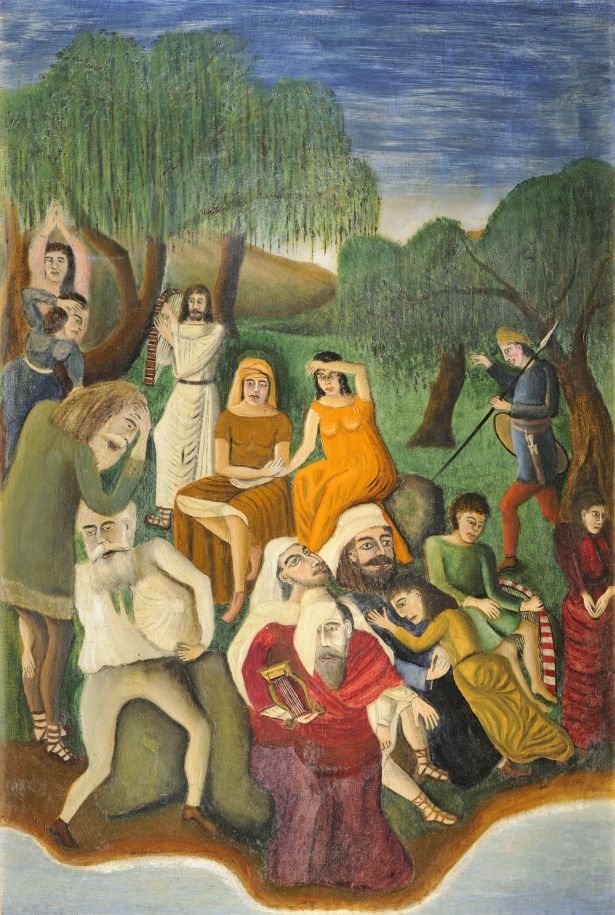
Foto: Carsten Gliese
Adalbert Trillhaase (1858 – 1936)
Adalbert Trillhaase was a leading naive painter in Germany. He was an autodidact and began to paint in 1918 at the age of 60. A year later the Erfurt born businessman moved to Düsseldorf to be close to the gallery owned by Johanna Ey. The legendary art dealer had attracted a circle of progressive artists, most of them members of the Young Rhineland group. They included such personalities as Otto Dix, Max Ernst, Heinrich Nauen and also Otto Pankok, who encouraged Trillhaase to devote himself intensively to art. Trillhaase is known as the “German Rousseau.” He mainly painted many-figured Biblical scenes full of drama reflected in the gestures and expressions of the characters. The Clemens Sels Museum Neuss owns 46 pieces by Trillhaase, making it the largest public collection of the artist’s works. Among this extensive group of works, “The Witch of Endor” surely stands out. The painting shows an event from the Old Testament. The First Book of Samuel tells how King Saul seeks out a medium to conjure up the spirit of the deceased prophet. When the witch does his bidding, Samuel predicts the end of Saul’s power. Trillhaase designs the uncanny scene as an allegory of helplessness. The mighty king be comes a symbol of modern man and his inner conflicts.
No less powerful is Trillhaase’s composition “The Lamentation of the Jews in Captivity.” The painting illustrates Psalm 137 which expresses the deep sorrow of the Jews in exile. A group of people crowded together are trying to comfort each other in a luxuriant green landscape. Overwhelmed by sorrow, none of them seem able to utter a lament. Only the Babylonian guard stepping forward under a tree on the right is upbeat. Armed with shield and spear he appears to be singing a song, to which he is beating time with his right hand.